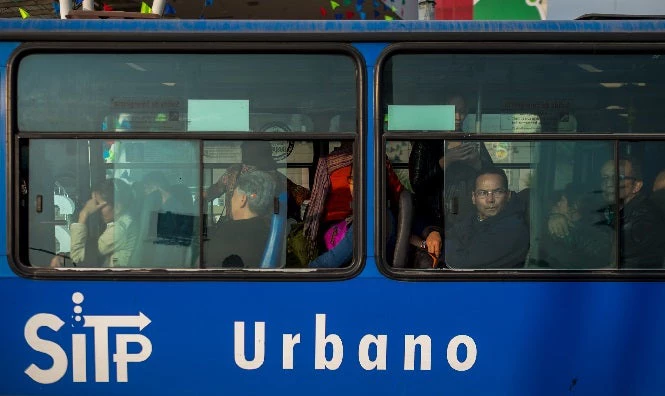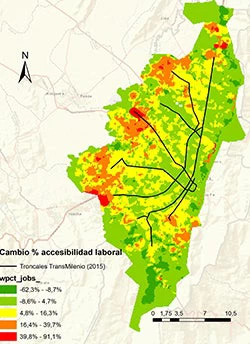
However, much less is known about the impact of the Sistema Integrado de Transporte (SITP), a more recent reform to modernize and integrate all of the city’s bus services, eliminate the old, sometimes unsafe traditional buses, and put an end to the guerra del centavo—a phenomenon whereby drivers aggressively compete for passengers at the expense of everyone’s safety. The reform introduced a number of sweeping changes:
- The multitude of small private operators were required to form companies and to formalize their drivers and maintenance personnel
- Services were contractualized via concession arrangements
- The overall number of buses on the roads was reduced
- Bus routes were reorganized
- Old buses were replaced with a more modern fleet
- Cash payment gave way to a smartcard system
- The city applied stricter quality control, regulation and enforcement.

Our analysis sheds light on the following employment accessibility results (for a discussion on affordability effects, look at a recent blog we published):
-
The high concentration of jobs in the Central Business District means the poor living on the periphery have access to fewer employment opportunities. By contrast, people living in the city center could access 76.3% to 97.9% of all employment in both 2011 and 2015.
Changes in Employment Accessibility before and after the SITP - Most accessibility gains are due to the expansion of the Transmilenio BRT system rather than the creation of the SITP. Areas where Transmilenio was recently introduced have seen employment accessibility increase by 39.8% to 91.1% thanks to more frequent services (5.1 min on average; 2-3 min for express services) and a high commercial speed: as Transmilenio buses run on dedicated corridors and make fewer stops, the average commercial speed in 2015 was 32.5km/hr.
- SITP now accounts for 70% of Bogotá’s public transit trips, but has not significantly improved employment accessibility. With the new system, accessibility has either marginally increased (users living in yellow areas on the map could at most reach 10% more jobs in 60 minutes), or worsened (light and dark green effects), especially for some low-income communities on the southern periphery.
Experiences like Bogotá’s SITP partly explain the lack of enthusiasm about bus reform from both public transit users and policymakers. Although many cities in the developing world are looking to formalize bus services and consolidate the myriad of small operators—which is the emerging consensus in bus reform— the challenge moving forward is to address the negative aspects of unregulated systems without undermining the agility and demand responsiveness that make informal buses financially viable.
In another recent blog post, we showcased various emerging pilots that are taking advantage of readily available sensors and mobile technology to improve “informal” buses in a more flexible, cost-effective, and gradual way than the comprehensive replacement model followed in Bogotá.
If you’re interested in learning more about our research in Bogotá, you can download the full paper here.




Join the Conversation